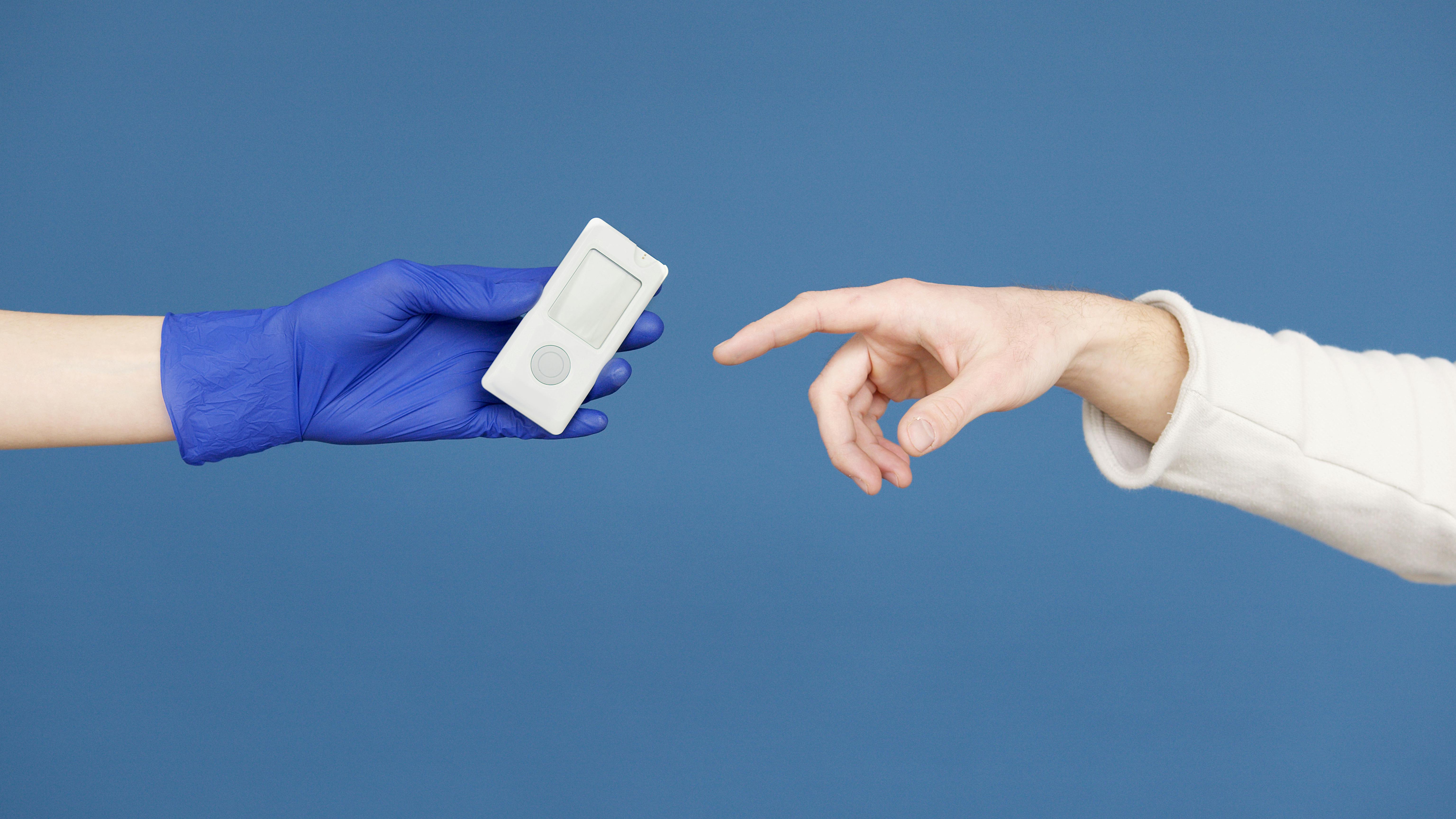ARTICLE SUMMARY:
As the insulin patch-pump field becomes more crowded, user-oriented design features could emerge as important market differentiators, and ViCentra, a small OUS company with a unique pump form factor believes it has an edge in that regard.
ViCentra, founded in 2013 and based in the Netherlands, has a tiny wearable insulin pump called Kaleido that is reusable, comes in 10 vibrant colors, and offers more flexibility than other patch pumps on the market.
The Kaleido patch-pump system comes with two durable pumps, a handheld controller, a disposable insulin cartridge that lasts three days, and a choice of two external infusion sets: a short set that can be placed on the body right next to the pump, or a longer infusion set that enables the pump to be carried in a pocket. Although the system is not tubeless, the pump is sleek, small, and lightweight (50 mm× 35 mm× 12.5 mm and about 19 grams) and comes in appealing colors that could strike a chord with pumpers (see Figure 1).
Kaleido was CE marked in 2016, with a soft launch OUS in 2018, but ViCentra soon ran into manufacturing scalability challenges. In early 2020, the company voluntarily withdrew from the market while it worked to resolve these issues. After raising a $74 million Series C round in late 2021, ViCentra was able to modernize its production facility, improve the manufacturing design, and transfer its infusion set manufacturing from a US contract manufacturer to its own facilities in the Netherlands.
In March 2023, ViCentra commenced a successful test relaunch of Kaleido in the Netherlands and France. This was followed in November by full commercial launch in Germany, the Netherlands, and France of both the stand-alone Kaleido system as well as a new hybrid closed-loop version using Diabeloop’s DBLG1 self-learning AID algorithm and Dexcom’s G6 CGM. The company expects to launch this year in additional European markets, including the UK.
According to CEO Frans Cromme, ViCentra’s philosophy around Kaleido centers on personalization, flexibility, and ease of use—attributes he says are important to pump users. Kaleido comes with two rechargeable pumps so that one is always charged and ready to go (a charge lasts three days), which gives people a sense of safety, Cromme points out. Moreover, users can pause the pump, take it off for a while, and then put it back on without having to change their infusion set.
The pump’s small, sleek profile is also a key feature that appeals to users, says Cromme, allowing them to easily wear it under their clothes. “And you’d be surprised how many people like [being able to choose] the different colors. We are competing with pumps that look and feel like traditional medical devices. Our users tell us how much they value a premium consumer look and feel.”
Overall, the system’s flexibility is central to its appeal, Cromme states. “People can choose where and when to wear it—they can use the short tube or the long tube, so they can wear it on their skin or put it in their pocket, and they can pause the pump and take it off whenever they want to, which makes it more adaptable to a user’s lifestyle.”
The current Kaleido pump is considerably smaller than Omnipod, says Cromme, but the next-generation Kaleido is planned to be even smaller. That level of miniaturization is possible because the system uses a unique non-syringe pumping mechanism invented and patented by ViCentra.
Most insulin pumps are essentially automated syringes, but Kaleido is different. It has a small pumping mechanism in the head of the insulin cartridge that pulls up 0.5µL with every stroke; dosing is accomplished by the number of strokes per minute. Using this technology, the company has been able to design an extremely small pump that is very accurate, even at low doses, Cromme asserts.
ViCentra is also developing a smartphone app designed to be simple and intuitive to use, and it has a tubeless patch-pump prototype in early-stage development as well. The latter will still use a durable, rechargeable pump, and users will be able to disconnect from the pump at will, which is a “key feature people like,” notes Cromme.
As for ViCentra’s US plans, the company will wait until it has European Medical Device Regulation (MDR) certification, which it hopes to obtain early this year, before turning its attention to the US market. It plans to make a few modifications to the system, including adding smartphone control, prior to submitting a 510(k), and is unlikely to obtain US market clearance before 2026.
Meanwhile, ViCentra will continue to expand its presence in Europe, a pump market Cromme says is growing faster than the US market. Only about 20% of Europeans with type 1 diabetes currently use a pump; 80% are still using pens/syringes. So there is a lot of room for growth, he points out, particularly in Germany, which has reimbursement in place and is a “booming” market for AID systems and CGMs.
ViCentra is currently raising a Series D round to fund commercial expansion, complete its FDA submission, and further automate production processes. It is also seeking to broaden its investor pool (existing VCs include Partners in Equity BV, EQT, Invest-NL, INKEF Capital, and Health Innovations) and hopes the new round will bring US investors on board.
